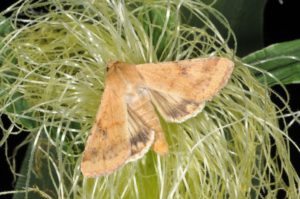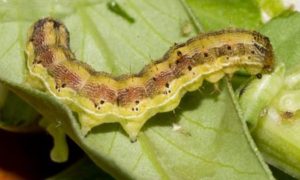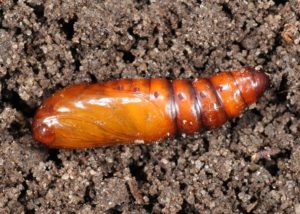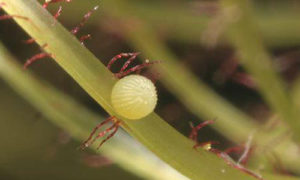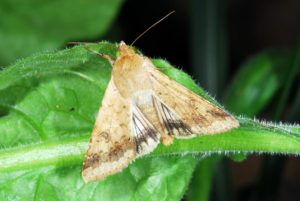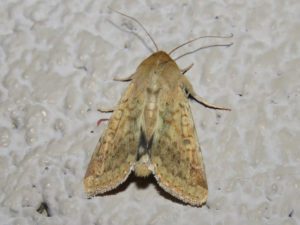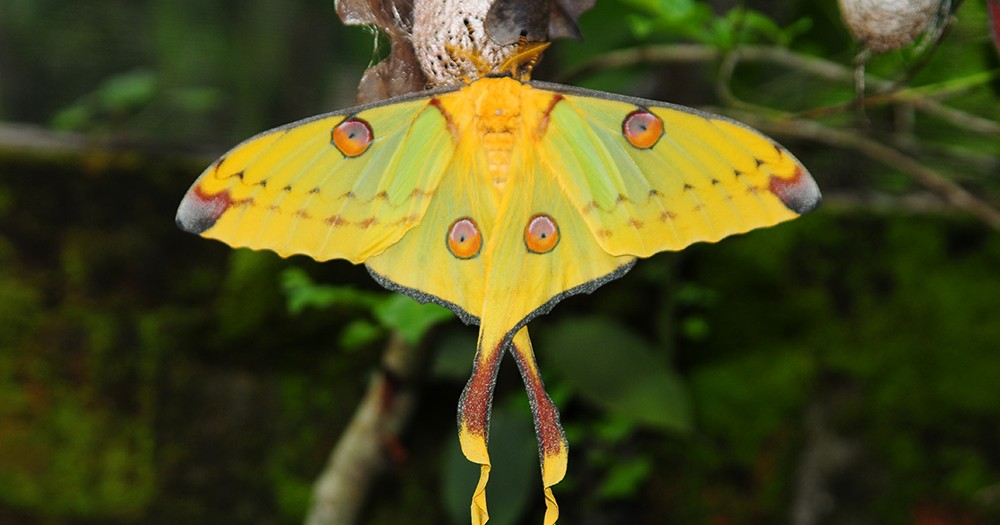Corn Earworm Moth (Helicoverpa zea)
The corn earworm moth is a member of the family of Noctuid moths. It can thrive on multiple hosts; as a result, the larvae are a common pest in the US.
Vegcropshotline.org
Scientific Classification
- Family: Noctuidae
- Genus: Helicoverpa
- Scientific Name: Helicoverpa zea
Description and Identification
Caterpillar
The larvae have orange heads, black thorax plates, and primarily black bodies. Sometimes caterpillars of different colors like brown, green, pink, and yellow have also been observed. Their bodies are covered with thorny microspines. The caterpillars go through 4-6 instars, feeding together while young but becoming more aggressive and cannibalistic while maturing. Hence, only 1-2 fully mature larvae finally remain on a single host plant, out of the many that hatch from eggs.
Pupa
After fully maturing, the larvae begin to pupate 5-10 cm below the soil’s surface. They are brown, 5.5 mm wide, and 17-22 mm long. The survival of the pupae depends heavily on factors such as the moisture content and temperature of the soil. In case of the low moisture in the soil the pupae could die out of dehydration.
Adult Moth
Sexual Dimorphism: Present but not prominent.
Color and Appearance
Forewing: When opened, the wings are yellow-brown, with a dark spot located right at the center. Sometimes, a broad dark traverse band is seen on the wing. When closed, the spot cannot be clearly seen.
Hindwing: When opened, they display a creamy-white coloration basally and a blackish hue distally. Sometimes, a tiny spot can be seen centrally. When closed, the creamy-white color is vaguely visible.
Average wingspan: 32-45 mm
Flight pattern: Erratic; depending entirely on mating.
Season: May-August
Quick Facts
| Other Names | Cotton bollworm, tomato fruitworm |
| Distribution | Throughout both the Americas, except for Canada and Alaska |
| Habitat | Tropical and temperate climes |
| Predators | Insidious flower bug, parasitic and braconid wasps |
| Lifespan of Adults | 5-16 days; in optimal conditions, they can live up to 30 days |
| Host Plants | Primarily corn and tomato; also, artichoke, asparagus, cabbage, cantaloupe, collard, cowpea, cucumber, eggplant, lettuce, lima bean, melon, okra, pea, pepper, potato, pumpkin, snap bean, spinach, squash, sweet potato, and watermelon |
| Adult Diet | Nectar from plants |
Scientific Classification
- Family: Noctuidae
- Genus: Helicoverpa
- Scientific Name: Helicoverpa zea

